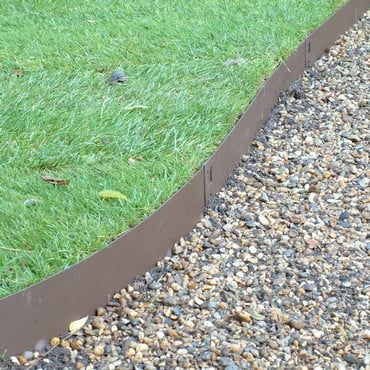The more Garden Chafer beetles you catch in our specially designed Garden Chafer Trap in May means less lawn-wrecking grubs devouring the roots of your well-kept grass in August and September - so it makes perfect sense to invest in and install one of these traps in your garden.
A single Garden Chafer Trap will cover an area of ½ an acre (2000 sqm) and the specially formulated pheromone lure - supplied with the trap and also available as a replacement - will entice the beetles into the trap, reduce numbers and give you a fair idea of the potential grub activity later in the summer. The Garden Chafer Trap comes complete with lure and instructions and traps Garden Chafer beetles, one of the two most common species in the UK.
- Garden Chafer Trap catches adult Garden Chafer beetles
- Pheromone lure attracts adult beetles
- Lure lasts for 6 - 8 weeks and is supplied with trap
- Replacement lures available separately
- Set up trap on lawn in May
- Garden Chafer Trap will both trap adult beetles and give indication of possible grub numbers
- Follow up with application of Nemasys Chafer Grub Killer nematodes in August/September
- Supplied complete with lure and instructions
- Simple to erect
- Easy to store
- Will attract adult beetles over an area measuring 2000sqm or ½ an acre
How to use:
On receipt of your Garden Chafer attractant lure, peel off the foil cover. This will reveal a solid attractant lure beneath a thin film. Do not peel this off, the attractant lure is now active. Tie the lure to the top of the Garden Chafer trap, so that it hangs in front of the green plastic vanes or tie the attractant lure to the cage in the top of the trap with the lure hanging in front of green vanes.
The lure releases an odour attractive to adult Garden Chafer beetles. These beetles fly to the trap and hit the vanes of the Garden Chafer trap and fall into the bucket. Most Garden Chafer beetles will emerge between May and June, so ensure a new attractant lure is in place for the first week of May. The attractant lures will release a scent /odour for up to six weeks.
Storage: Store un-opened lures in a fridge for short periods or a freezer for longer periods.
Product Reviews
First of all it does work. however it does not collect thousands. I have two, one on the front and one on the back garden. in the first year I have collected about twelve and have found quite a few dead ones in the surrounding area. so worth having.
Not very successful. Didn't catch a single bug in over six weeks, but I found dozens all over the lawn and plants. Needs a bit more research I think!!
In a small garden full of garden chafers, this trap collected just 2 in a 3-week period. By contrast I could walk round and collect up to 15 garden chafers each day just by looking at the nearby plants and picking them off. The pheromone seems completely ineffective, and I certainly wouldn't buy this again.

Appearance and Lifecycle
Chafer grubs develop from eggs laid by Chafer beetles, sometimes known as may bugs or beetles. There are several species that cause problems in the U.K including Garden chafer (Pyllopertha horticola) and Welsh chafers (Hoplia philanthus). Adult garden chafer beetles have a metallic green head and body with brown wing cases. The Welsh chafer adults have a black head with reddish brown wing cases. The larvae or grub stage have white bodies and curve into a c shape with light brown heads. The size varies between 9mm and 30mm in length.
The grubs are often mistaken for Vine weevil larvae but have legs, where as vine weevil larvae don’t. There is also a much larger grub called the Cock Chafer, which spends two years in the soil, as opposed to the one season of the others. Chafer beetles emerge in June; swarm, mate and lay eggs in lawns, which develop into grubs. In the autumn these grubs start going dormant and over-winter deeper in the soil before becoming active again when soil temperatures rise in the spring.
Symptoms and Damage
The damaging part of the Chafer beetle life cycle is the grub or larval stage. They feed on the roots of grass and turf. This slows grass growth and turns grass areas yellow. In severe cases the grass can be pulled up easily, as the roots have all been eaten away. The in-direct damage caused to lawns by chafer damage can be even worse, as the presence of these grubs attracts animals and birds to the lawns. Badgers and Foxes will dig up lawns looking for the grubs causing severe damage.
Natural Choice Treatments
The only non-chemical solution against Chafer grubs in lawns is the use of nematodes. A more preventative measure is a Garden Chafer beetle trap to help warn of garden chafer activity and reduce the number of adult beetles.
What The Press Say
Gardeners World1st March 2013
We love...Versatile tools to make light work of lawn care
This Garden Chafter Trap gets the bugs before grubs get the grass


























